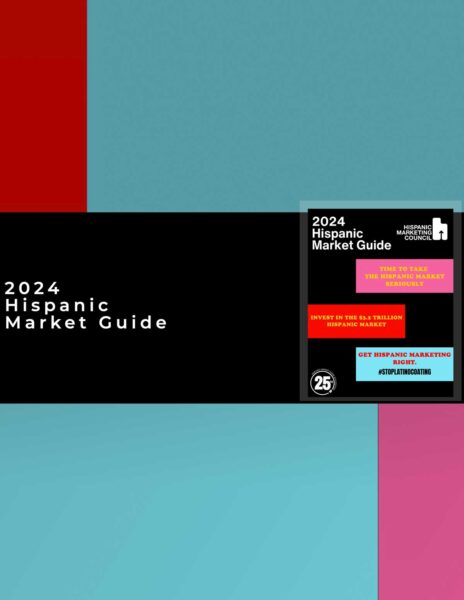Seven Reasons Why The Hispanic Segment Can Beat The Recession
January 25, 2023

By Isaac Mizrah – CEO of Alma Agency
As a new year starts, we return to our work routine, facing the prospect of a recession. Some believe it will be a mild one, while others are more pessimistic. Nonetheless, most experts believe the country will face an economic slowdown, and consequently, brands may reassess their marketing investments as they will act more cautiously on where to invest their resources in 2023.
Traditionally, there’s an extra level of concern for the multicultural industry during recessions since multicultural budgets used to be one of a few budget items first impacted by a recession.
However, this may not be the case this year, and I will explain why the opposite may happen, i.e., why a higher interest in multicultural marketing efforts, mainly led by the Hispanic consumer segment, may occur.
Below are the main reasons I believe marketers may consider multicultural marketing as their recession antidote:
- Demographic trends. The traditional White consumer target has been experiencing a population decline, and ethnically diverse segments are driving all population growth in the U.S.
- The Hispanic segment is focused on consumption. The Hispanic consumer segment tends to use its discretionary income on household expenditures. This consumption is critical for most B2C marketers.
- Better education means more protection against unemployment. Over the past decade, ethnic consumers—led by the Hispanic segment—have been seeing an improvement in educational attainment, measured as % of high school graduation or as a % of college enrollment. This means better job qualifications, better salaries, and more protection when facing an economic downturn.
- Love for advertising and loyalty to brands that “know them.” Historically, Hispanic consumers tend to over-index on their love towards brands that not only advertise to them but—more importantly—demonstrate a deep understanding of the segment’s passions and culture and are part of their communities.
- Small business boom. Diverse segments are leading the creation of small businesses across America. And these small businesses are behind the hiring boom the country has witnessed over the past year, despite headwinds like high inflation and rising interest rates.
- Multicultural marketing achieved national scale. While in past decades, multicultural marketing was considered by many as a regional strategy, today, the impact of multicultural programs can be felt nationwide.
- More ROI and effectiveness. The translation-based Total-Market approach to target multicultural segments has failed to deliver results and may negatively impact brands. Hence, it has been consistently abandoned by brands and marketers. There has never been a time when marketers have access to so much research, studies, cases, and ROI models that educate the market on how to build effective multicultural marketing plans.
I spoke with Gonzalo Del Fa, president of GroupM Multicultural, who analyzed the investment behaviors during the 2009-2010 recession and found an interesting pattern:
‘Clearly, marketers have already realized that cutting Hispanic media investment is not a good idea. When we look at the last ten years, Hispanic advertising investment has steadily grown faster than in English-language media. Even in moments of crisis like the last recession (2009-2010), English-language media was hit much harder than Hispanic (-10.2% vs. -8.6%), and Hispanic media recovered much faster as well (+6.5% English media vs. +8.4% Hispanic media). Several factors are behind that pattern, but from my perspective, the most relevant one is that advertisers engaging with the Hispanic audience have already seen that in-language media drives higher ROI and that Hispanics are driving most of the growth across most categories.‘
Marketing under financial pressure in 2023 may require different behaviors from CMOs. The country has changed; there’s a new set of consumers representing the bulk of the business growth for years to come. Here are a few suggestions on how to invest in 2023 when it comes to MC:
Rethink Budget Allocation
- Old behavior: “I have to find a budget to support multicultural marketing.”
- New behavior: “I will reallocate resources from general market to the multicultural market.”
Rethink Total Market
- Old behavior: “One brand positioning, one strategy, and one execution to deliver efficiencies.”
- New behavior: “One brand positioning. Strategies and executions that deliver highest ROI.”
Rethink Your Messaging Calendar
- Old behavior: “Target multicultural consumers once or twice a year, ideally during Heritage Months.”
- New behavior: “Target multicultural consumers as continuously as possible, close to the moments they think about and act upon your product or services.”
Facing an environment of economic uncertainty in 2023 may be a given, but surrendering to a pseudo-inevitable decrease in sales and profits is optional. Any economic crisis can bring new opportunities to reinvent brand strategies, modernize marketing approaches and abandon old paradigms.
The Hispanic consumer segment represents a priority opportunity this year; resilient brands tend to be the ones that understand and act upon this opportunity. Hispanic consumers are also resilient and optimistic by nature; as the adage says, “when facing a storm, there are those who complain and get wet and those who smile and sell umbrellas.”































